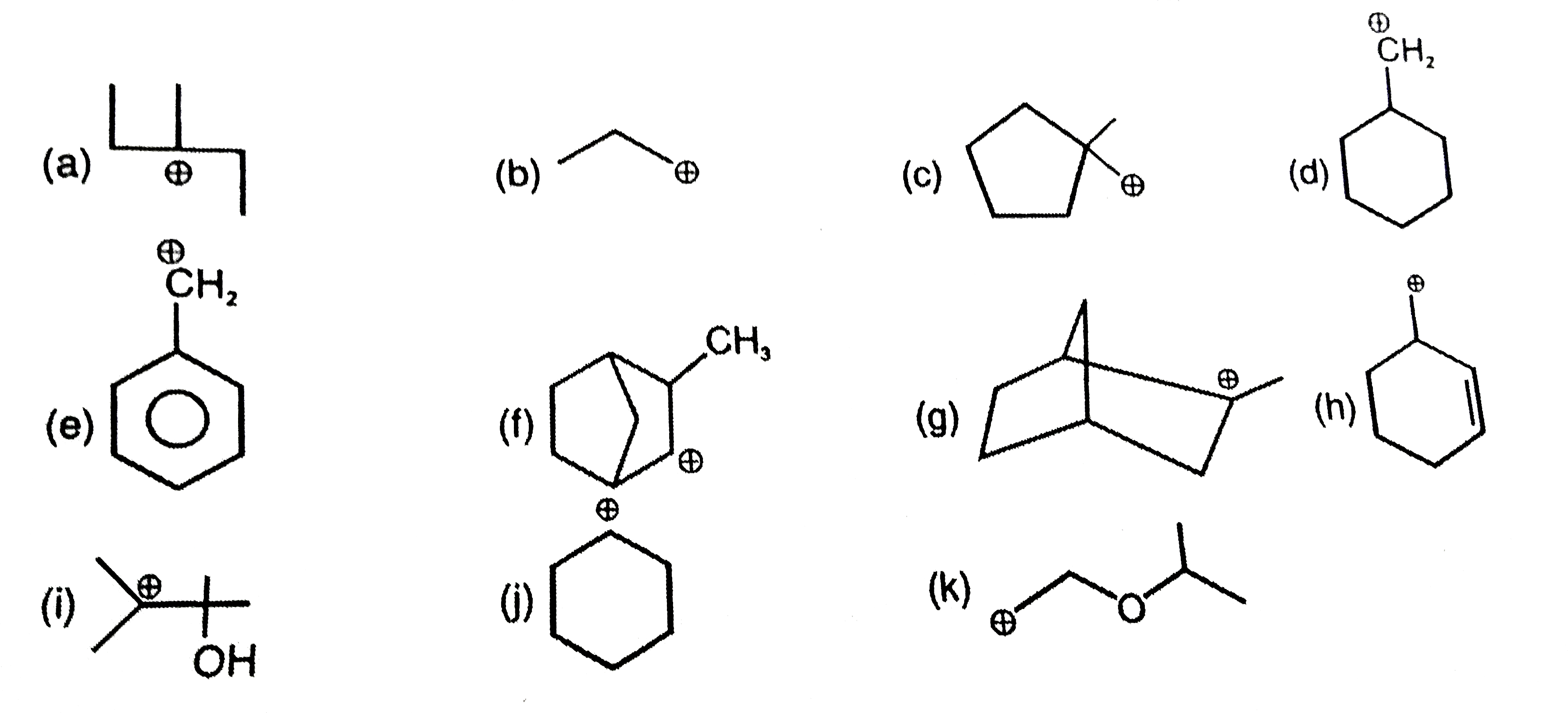Which of these carbocation will undergo favourable rearrangement?

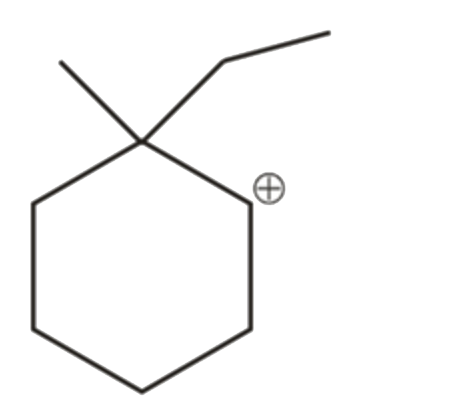
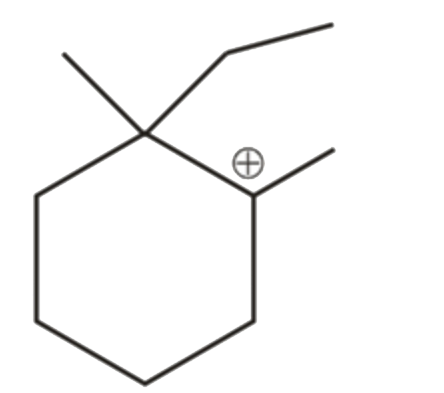
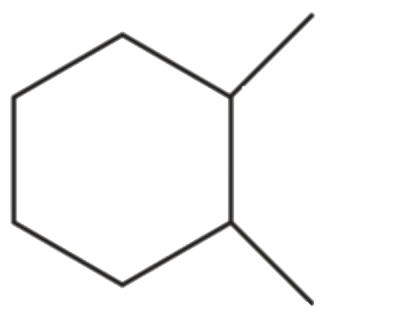
The correct Answer is:B
To determine which carbocation will undergo favorable rearrangement, we need to analyze the stability of each carbocation based on the number of alpha hydrogens and the potential for rearrangement. Here’s a step-by-step breakdown of the solution:
Step 1: Identify the Carbocations
We have four different carbocations to analyze. Each carbocation is associated with a specific structure, which we will evaluate for stability and potential rearrangement.
Step 2: Analyze the First Carbocation
- Structure: A cyclohexane ring with a carbocation.
- Alpha Hydrogens: Count the alpha hydrogens around the carbocation.
- Methyl group contributes 3 hydrogens.
- Other groups contribute additional hydrogens.
- Total Alpha Hydrogens: 6.
- Rearrangement: If we shift a hydride, the total alpha hydrogens remain the same (6). Thus, no favorable rearrangement occurs.
Step 3: Analyze the Second Carbocation
- Structure: A cyclohexane ring with a methyl and ethyl group.
- Alpha Hydrogens: Count the alpha hydrogens.
- Methyl contributes 3 hydrogens.
- Ethyl contributes 2 hydrogens.
- Total Alpha Hydrogens: 5.
- Rearrangement:
- If we shift the methyl group, we get a new carbocation with 6 alpha hydrogens.
- If we shift the ethyl group, we also get a carbocation with 6 alpha hydrogens.
- Conclusion: The rearrangement is favorable since we increase the stability of the carbocation.
Step 4: Analyze the Third Carbocation
- Structure: A cyclohexane ring with two methyl groups.
- Alpha Hydrogens: Count the alpha hydrogens.
- Each methyl group contributes 3 hydrogens.
- Total Alpha Hydrogens: 5.
- Rearrangement:
- Shifting a methyl group results in a carbocation with 4 alpha hydrogens.
- Shifting the ethyl group results in a carbocation with 5 alpha hydrogens.
- Conclusion: No favorable rearrangement occurs as the stability does not increase.
Step 5: Analyze the Fourth Carbocation
- Structure: No carbocation present.
- Conclusion: Since there is no carbocation, no rearrangement can occur.
Final Conclusion
The only carbocation that undergoes a favorable rearrangement is from the second option. The other options do not provide a more stable carbocation upon rearrangement.
Summary of Findings
- Favorable Rearrangement: Second option.
- Unfavorable Rearrangement: First, third, and fourth options.
We have four different carbocations to analyze. Each carbocation is associated with a specific structure, which we will evaluate for stability and potential rearrangement.
- Structure: A cyclohexane ring with a carbocation.
- Alpha Hydrogens: Count the alpha hydrogens around the carbocation.
- Methyl group contributes 3 hydrogens.
- Other groups contribute additional hydrogens.
- Total Alpha Hydrogens: 6.
- Rearrangement: If we shift a hydride, the total alpha hydrogens remain the same (6). Thus, no favorable rearrangement occurs.
- Structure: A cyclohexane ring with a methyl and ethyl group.
- Alpha Hydrogens: Count the alpha hydrogens.
- Methyl contributes 3 hydrogens.
- Ethyl contributes 2 hydrogens.
- Total Alpha Hydrogens: 5.
- Rearrangement:
- If we shift the methyl group, we get a new carbocation with 6 alpha hydrogens.
- If we shift the ethyl group, we also get a carbocation with 6 alpha hydrogens.
- Conclusion: The rearrangement is favorable since we increase the stability of the carbocation.
- Structure: A cyclohexane ring with two methyl groups.
- Alpha Hydrogens: Count the alpha hydrogens.
- Each methyl group contributes 3 hydrogens.
- Total Alpha Hydrogens: 5.
- Rearrangement:
- Shifting a methyl group results in a carbocation with 4 alpha hydrogens.
- Shifting the ethyl group results in a carbocation with 5 alpha hydrogens.
- Conclusion: No favorable rearrangement occurs as the stability does not increase.
- Structure: No carbocation present.
- Conclusion: Since there is no carbocation, no rearrangement can occur.
The only carbocation that undergoes a favorable rearrangement is from the second option. The other options do not provide a more stable carbocation upon rearrangement.
- Favorable Rearrangement: Second option.
- Unfavorable Rearrangement: First, third, and fourth options.
Topper's Solved these Questions
Similar Questions
Knowledge Check
Which of the following carbocation will undergo rearrangemment ?
A B
B CCH3−C∣CH3H−+C=ODCH3−NH−+CH−C∣CH3H−CH3
CCH3−C∣CH3H−+C=ODCH3−NH−+CH−C∣CH3H−CH3Which of the following carbocation will undergo rearrangemment ?
A B
B CCH3−C∣CH3H−+C=ODCH3−NH−+CH−C∣CH3H−CH3
CCH3−C∣CH3H−+C=ODCH3−NH−+CH−C∣CH3H−CH3Which of the following carbocation will undergo rarrangement ?
A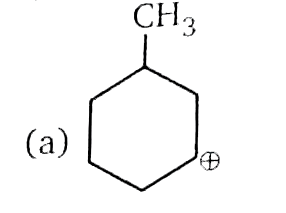 B
B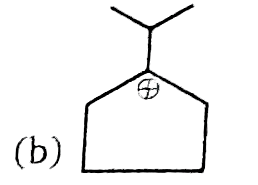 CCH3−C∣CH3H−C⊕=ODCH3−NH−⊕CH−C∣CH3h−CH3
CCH3−C∣CH3H−C⊕=ODCH3−NH−⊕CH−C∣CH3h−CH3
